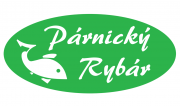Párnický rybár

|
PÁRNICA THEN AND NOW The name Párnica is encountered for the first time in archival documents from 1382, which were created during the description of the area of the Istebné settlement. The village Párnica most probably did not exist at that time. The first known evidence of its existence dates back to 1420 - ‘Villa Parnice’. The origin of the name was supposedly derived from a spring of warm water called ’teplica’ or ’párnica’, which is located behind the village towards Zázrivá. The water did not freeze even during the winter months and was constantly steaming. In the past, a large part of the population was engaged in crafts. The largest number were wheelwrights, who produced wagon wheels and other parts of carriages, weaving looms and chests. The production of wooden spoons and tablespoons, sewing of caps, blacksmithing, carpentry and shoemaking, milling and sawmilling was also widespread here. The main source of livelihood was agriculture associated with sheep breeding. A paper-manufactory was established in 1785 at the confluence of the Zázrivka River into the Orava River. It was developing very well. The manufactory used water from warm springs for operation and four paper mill masters worked in it. Párnica residents also worked in three stone quarries – Smoleňová, Pod bradlom and Bystrička. The village Párnica is located at an altitude of 458 m above sea level in the south-western part of Orava, in the Orava River valley in the direction from Kraľovany to Dolný Kubín. Its district covers an area of 5041 ha. The highest place in the district has an altitude of 1610 m above sea level (the top of Veľký Rozsutec) and the lowest place has an altitude of 420 m above sea level (the confluence of the Bystrička stream with the Orava River). In the 1950's there were 1425 inhabitants in Párnica. As a result of the construction closure for the Dierová Waterworks, the number of inhabitants decreased significantly. Currently, the population of Párnica is approximately 900 inhabitants and the village has been experiencing a rapid development since the 21st century. Párnica is becoming a popular location for many young families due to good conditions for the construction of family houses, the accessibility of the village and its amenities. Párnica is a village that returns to tradition and honours the heritage of its ancestors also through folklore. The bearers of local folk traditions and customs are the Children's Folklore Ensemble Sajdáčik and the Folklore Group Párničan. An interesting feature is the local museum - the Room of Old Mothers, which hides exhibits approaching the local life in years long past. Párnica is also known for the presentation of blueprint, which has been inscribed on the UNESCO World Cultural Heritage List since 2016, through the blueprint workshop of Matej Rabada. Villagers welcome visitors every year to the traditional folklore festival Párnica švábkobranie, which is dedicated to the second bread of the Orava region – called švábka (potatoes). Visitors can still see elements of traditional folk architecture (wooden houses, granaries, threshing floors, etc.) in the village. Today, Párnica is actively involved in sports. The village is successfully represented by young talents in table tennis, floorball and football. The volunteer fire brigade, which has already celebrated its centenary, has an irreplaceable place in the village. It brings together all generations, from the youngest ’Flamingos’ to experienced firefighters. The senior citizens of Párnica are also active. They represent the municipality and participate in various cultural and sporting events. The village is successfully represented by young talents in table tennis, floorball and football. The volunteer fire brigade, which has already celebrated its centenary, has an irreplaceable place in the village. It unites all generations, from the youngest ’Flamingos’ to experienced firefighters. The local senior citizens are also active. They represent the municipality and participate in various cultural and sporting events. |
